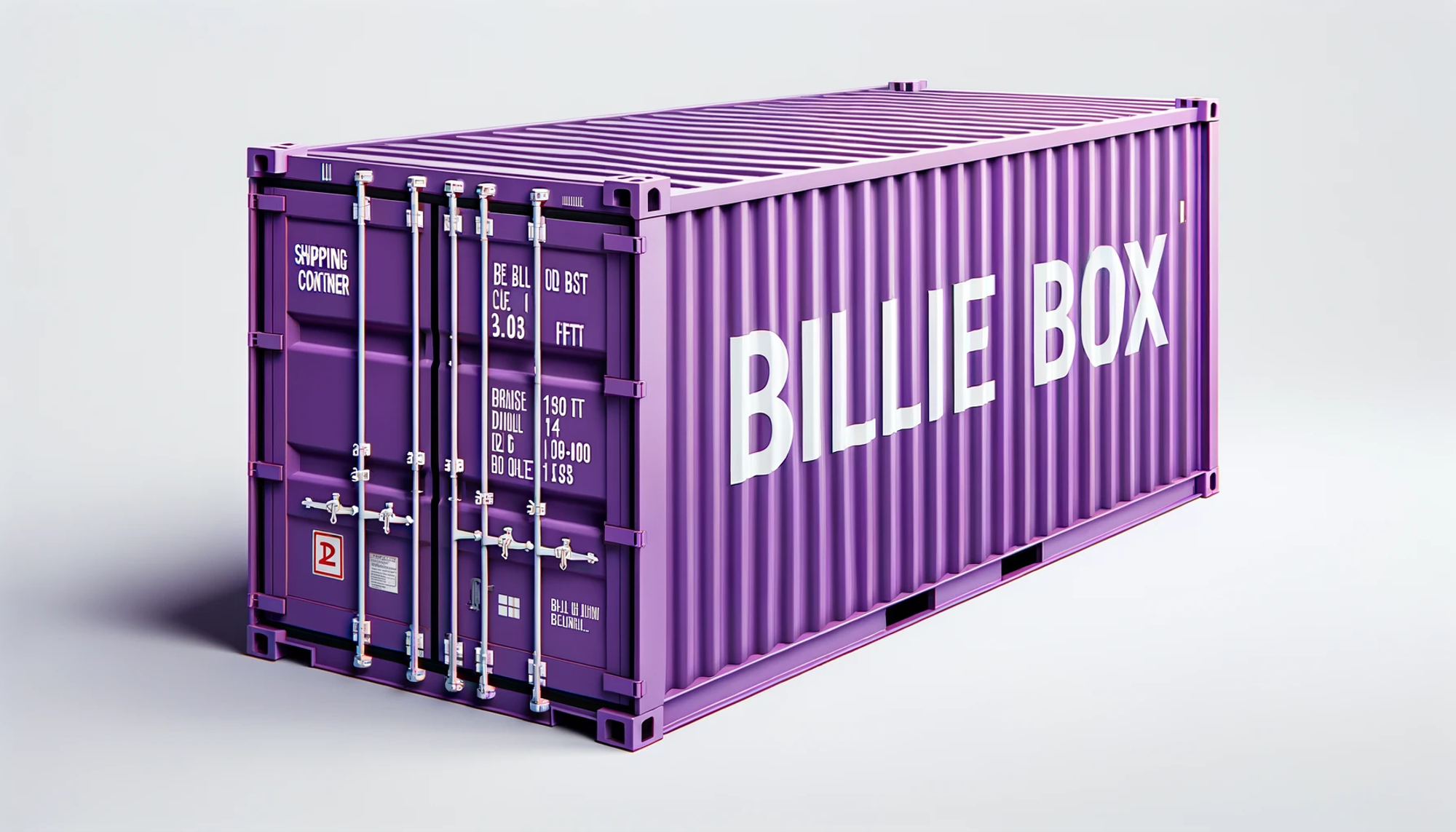Glossary of Shipping Container Terms and Terminology

To help you get your head around the often confusing world of shipping container speak, we’ve put together a short glossary of terms to help you speak and understand the lingo, followed by a more extensive explanation of the anatomy of a shipping container.
Shipping Container
One of the most obvious terms on the list, a shipping container is either a 20ft long or 40ft long metal container that is used to ship goods around the world via cargo ships
Storage container
Another most obvious term on this list, a storage container is a large metal container which has been designed for storing and transporting goods securely.
Locking bar handles
These are the handles which are fitted with locking bars that provide additional security to avoid anyone gaining access to the container who shouldn’t!
Top header
The top header is a term for describing the upper horizontal beam or bar which forms the top part of the shipping container’s frame.
Bottom header
As you may have guessed from the previous description, the bottom header refers to the lower horizontal beam or bar which forms the bottom part of the shipping container’s frame.
Top rail
This term refers to the uppermost horizontal rail which features on the container’s side or end walls.
Bottom rail
Again, you may already have guessed what this term means after understanding what the top rail is – the bottom rail is the lowermost horizontal rail which features on the container’s side or end walls.
Marine-treated plywood floor
A marine-treated plywood floor is any floor which is constructed out of plywood and has been treated with materials that enable it to resist moisture whilst also withstanding the typically harsh conditions of marine environments.
Bamboo floor
A bamboo floor is a flooring option for shipping containers which is made from, you guessed it, bamboo! A material known for its longevity, sustainability and modern looks, bamboo is a great way to protect the environment inside of a shipping container.
Corrugation
A corrugation is a pattern of alternating ridges and grooves on the surface of a construction material. This can often feature on shipping containers and adds to the overall integrity and resilience of the unit.
Corrugated
This term refers to any surface which features alternating ridges and grooves which are arranged to improve its strength. Unsurprisingly, this design is particularly popular on shipping containers!
Door hinge
Far from being exclusive to the world of shipping containers, a door hinge is a device that allows the door of a shipping container to pivot or swing open and closed when needed.
Rubber seal
Again, a rubber seal is something which exists on various other structures and furnishings and is a simple strip or gasket constructed out of rubber. It is used to create an airtight or watertight seal between two surfaces, such as the door and frame of a shipping container.
Door seal
Another common feature on furnishings beyond the realm of shipping containers, a door seal is often constructed out of rubber or a similarly flexible material which is fitted around the edges of a door to prevent the penetration of water, dust, or other contaminants into the closed-off space.
MGW (maximum gross weight)
The MGW refers to the maximum allowable weight of a loaded container. This is inclusive of its contents as well as the container itself, and is specified by regulations or standards.
TEU
TEU is an abbreviation of “twenty-foot equivalent unit,” which is a standard unit of measurement that is used in the shipping industry to define the size or capacity of a standard shipping container.
CSC plate
A CSC plate is a safety approval plate which is attached to a shipping container to indicate that it is compliant with the International Convention for Safe Containers (CSC) standards and regulations.
Shipping container
There’s a very good chance that if you’ve arrived on this list you know what a shipping container is. But in the event you’re still unsure, or found your way here by mistake, a shipping container is a metal container which is used for transporting goods by sea, road, or rail. Providing easy handling and compatibility across various modes of transportation, they are renowned for being durable and practical.
Intermodal container
An intermodal container is designed to be transported using multiple modes of transportation. This means that it can be transported aboard ships, trains, and trucks without the additional need to unload or transfer its contents between modes of transport.
Corten steel
Corten steel is a type of weathering steel which is greatly resistant to corrosion, making it a good choice for shipping containers that are exposed to the elements.
Tare weight
The weight of an empty container, including its structure, flooring, and fittings, but not including its contents.
Container depot
A container depot refers to any facility or designated area which is designed for storing shipping containers. Often a container depot will offer services to repair, maintain and inspect shipping containers.
Absorpole
Absorpole is a moisture-absorbing device which is commonly used in shipping containers to help control humidity as well as prevent condensation.
Lock box
A lock box is a reinforced metal housing or enclosure which is designed to feature a padlock. This provides an additional layer of security which prevents unauthorised access to any of the container’s locking mechanisms.
Corner casting
Corner casting is a term used to describe the metal fitting or structural element which is located at the corners of a shipping container. These are primarily used for lifting, stacking, and connecting shipping containers safely and securely during transportation.
Lock rod
A lock rod or bar that engages with the locking bars of a shipping container‘s doors makes sure that they will remain safely closed as well as preventing any tampering or unauthorised access.
Ship planner
A ship planner is someone whose job it is to arrange efficient shipping routes for shipping containers.
Think we’ve missed something or are still unsure? Simply give us a call today to find out more, or read on for a fuller explanation of the ins and outs of a shipping container.
Anatomy of a shipping container
Often, the most ordinary and everyday objects possess a far greater complexity than first meets the eye. Shipping containers are no exception to this rule, and we’re often asked a wide range of questions that reveal how there’s much more to understand about them than simply knowing that “they are large metal constructs which provide effective storage and working solutions”. To plumb the depths of shipping containers, we’ve assembled a brief guide we’re referring to as “the anatomy of a shipping container”. In this guide, we’ll take you through a series of popular questions to provide you with all the answers you need to truly understand the workings and possibilities of shipping containers.
No doubt the best place to start this anatomical approach to shipping containers is to answer the necessary question of, “What are shipping containers made of?”. Typically, they are made of ‘weathering steel’, which is the more popular name given for the more technical material ‘maritime-grade corten steel’. Remaining consistent with the metaphor of anatomy, it might be helpful to think of this material as the skin of a shipping container. Deliberately designed to oxidise and grow a thin layer of rust, this material ultimately ensures that shipping containers are resilient in the face of the elements and are able to safely protect the contents stored inside.
Now that you know what a shipping container is made of, it’s time to move on to the next most important question relating to anatomy; dimensions. Specifically, the question, “What is the size of a shipping container?”. Like the anatomy of everything else, the question of size can vary quite considerably. In the world of shipping containers, the most popular sizes are 20ft and 40ft, with a set of double doors and a wooden floor. In the interests of technical anatomy, you can get hold of a comprehensive breakdown of our shipping container dimensions over on our dedicated shipping containers page. On this page, you’ll be able to find the answers to questions like “How wide is a shipping container?” and “How tall is a shipping container?” as well as “How much does a shipping container weigh?”, to ensure that you have everything you need to make an informed decision about which will be best for your particular needs. Whilst they are often used for storage rather than shipping, 10ft shipping containers also exist. In short, there are a few different sizes of shipping containers, and which option you choose is determined by what it is going to be used for.
With a firm handle on the exterior of shipping containers, it remains to take a look inside to finalise the anatomy of a shipping container. Often, people ask us how to insulate a shipping container. This is especially important whenever storing items that might be overly sensitive to the effects of condensation and the cold. To mitigate these effects, we recommend installing shipping container vents. Composed of 10 holes which are punched into the wall and covered by an external bracket, this solution enables a steady airflow whilst keeping the container watertight. At Billie Box, we are able to fit additional vents at cost and, in our experience, we have found that having small ventilation points at the end or side of a shipping container proves to be the most adequate solution.
In addition to vents, there are other readily available solutions to preserve and insulate the interior of a shipping container. Namely, simple things like dehumidifiers can go a long way towards protecting the contents stored inside of a shipping container. Whilst these typically require an external electrical supply and can be cumbersome to install, there’s no doubt that they provide an effective defence against unwanted environmental impacts. For a more lightweight solution, you may also consider Absorpoles. These compact devices can be effortlessly hung from the lashing rings found inside a shipping container to keep condensation at bay. Generally speaking, our team would recommend fitting around four of these poles inside a 20ft shipping container and six for a 40ft shipping container. Though Absorpoles do require replacing if you wish to keep the interior of a shipping container free of moisture, the number of times you need to perform this will depend entirely on the weather conditions as well as the type of equipment you are storing.
We trust that our anatomical approach to the seemingly modest shipping container has helped to provide you with a greater understanding of their possibilities and how they may provide you with the solution that you’re looking for. Should you have any additional questions, or are interested in making an enquiry, be sure to get in touch with a member of our team today.

